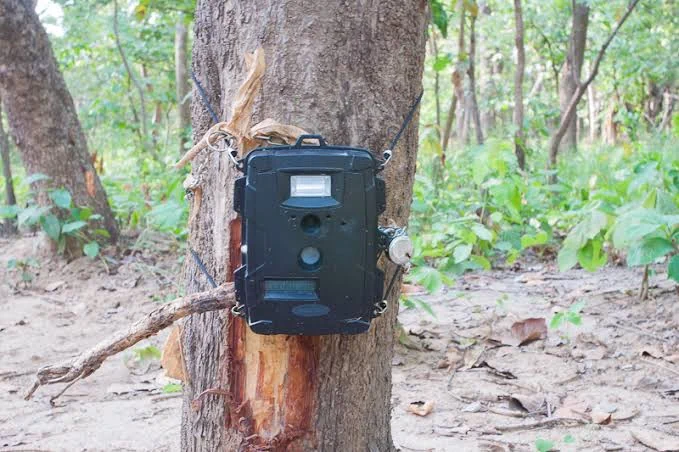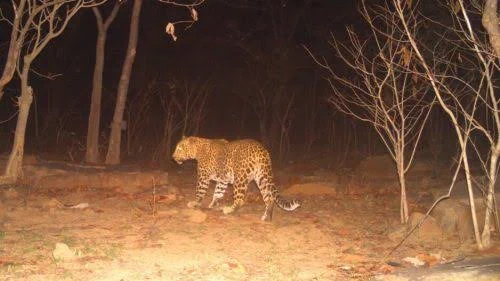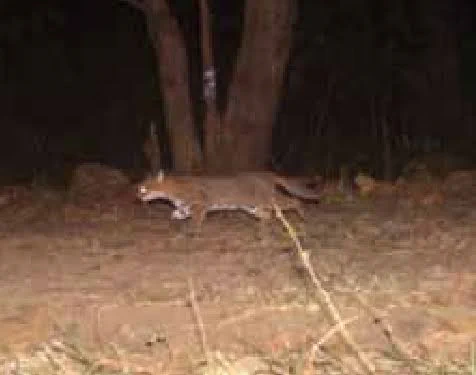Role of Technology in Wildlife Conservation
On World Wildlife Day, we are reminded of our vital mission to protect the natural world—a mission where modern technology plays a key role. Camera traps, silent watchers of the wilderness, are at the forefront of this quest, especially in the lush Kuno Wildlife Sanctuary in Madhya Pradesh. Here, technology and nature converge, offering new hope for endangered species like the cheetahs.
Welcome to the Kuno Forest Retreat, nestled in this sanctuary, where guests connect with nature and contribute to wildlife conservation. Through the eyes of camera traps, from motion-sensing to thermal imaging, we gain invaluable insights into wildlife behaviour, helping protect these animals more effectively.
Join us on a journey into the heart of wildlife conservation, powered by technology, at a place where every visit supports a greater cause. Discover how, together, we can make a difference for the future of our planet.
The Role of Camera Traps in Wildlife Conservation

Camera traps revolutionise wildlife conservation by silently capturing wildlife images without disturbance. These specialised cameras, blend into natural habitats to record animals’ movements and heat signatures. This technology offers a non-invasive way to study wildlife, providing real insights into their undisturbed behaviours and the ecosystem.
Camera traps serve as essential tools in wildlife conservation with several key applications:
Data Collection: Act as nature’s census takers by collecting vital data on animal populations, movements, and behaviours without human interference. This data aids scientists and conservationists in protecting endangered species and maintaining biodiversity.
Identifying Species: Help uncover the mysteries of the animal kingdom by capturing images of nocturnal or elusive animals. This allows for the identification of new or rare species, enhancing our understanding of ecosystem dynamics and supporting targeted conservation efforts.
Monitoring Illegal Activities: Serve as silent sentinels by capturing evidence of poaching and illegal logging, providing law enforcement and conservation authorities with the information needed to protect habitats and species.
Ecosystem Health: Offer insights into the health of ecosystems by tracking animal population changes over time, helping to detect signs of ecological health or distress for timely interventions.
Camera traps, the ever-watchful eyes in the forest, have become indispensable in our quest to conserve the natural world. With their continuous stream of data and insights, they are pivotal in places like the Kuno Wildlife Sanctuary, bringing hope and action towards preserving our planet’s biodiversity.
Cheetah Conservation at Kuno Wildlife Sanctuary

In the sprawling expanses of the Kuno Wildlife Sanctuary, a groundbreaking conservation effort is underway. This initiative marks the return of the cheetah, the world’s fastest land animal, to India after a hiatus of over 70 years. It is a bold step towards biodiversity restoration and a testament to the sanctuary’s commitment to wildlife conservation.
The reintroduction of cheetahs into Kuno National Park in Madhya Pradesh is more than just a conservation milestone; it is a carefully orchestrated effort to rebalance an ecosystem. These majestic predators play a critical role in maintaining the health of their habitat, controlling herbivore populations, and ensuring the diversity of the grasslands thrive.
The Role of Camera Traps in Cheetah Conservation
Camera traps have emerged as unsung heroes in this ambitious cheetah conservation project. These discreet guardians have been instrumental in monitoring the newly reintroduced cheetah populations, offering insights into their movements, behaviour, and health without any human interference. By capturing footage of these elusive animals, camera traps help conservationists understand how cheetahs are adapting to their new environment, identify potential threats to their survival, and take preventive measures to ensure their safety.
The data collected by these cameras are invaluable, providing real-time information on cheetah locations, their hunting patterns, and interactions with other species. This information is critical for making informed decisions about habitat management, conflict avoidance with local communities, and the overall success of the cheetah reintroduction program.
Overcoming Conservation Hurdles

The road to successful cheetah conservation is fraught with challenges. From habitat encroachment and human-wildlife conflict to the complexities of establishing a new predator population in a complex ecosystem, the hurdles are many. However, technology, particularly camera traps, has been a beacon of hope in addressing these challenges.
For instance, by monitoring the movements of cheetahs, conservationists can identify and mitigate potential conflict zones with human settlements, reducing the risk of human-wildlife conflicts. Similarly, tracking health and behaviour patterns helps in the early detection of diseases or injuries, allowing for timely intervention.
The camera traps also play a crucial role in engaging and educating the public about cheetah conservation efforts. By sharing images and videos captured by these devices, Kuno Wildlife Sanctuary and Kuno Forest Retreat can foster a deeper connection between people and these magnificent creatures, promoting conservation awareness and support.
A Future Forged Together – Technology, Conservation, and You
Modern technology, especially camera traps, has become indispensable in wildlife conservation, offering unprecedented insights into the natural world. At the core of this technological advancement is the Kuno Wildlife Sanctuary, enhanced by the immersive experience at Kuno Forest Retreat.
We encourage you to support these conservation efforts. Visit the Kuno Wildlife Sanctuary, stay at the Kuno Forest Retreat, and play a part in safeguarding our planet’s biodiversity. Together, we can make a significant impact on preserving the beauty and diversity of wildlife for future generations.
